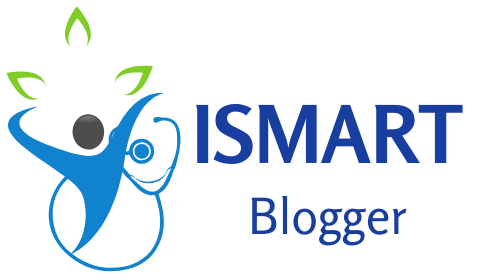Unlock Vitality: Music Therapy for Older Adults’ Wellness
Explore music therapy’s powerful benefits for older adults. Uncover the science behind it, its implementation, and its impact on wellness.
Tuning into Wellness: Music Therapy for Older Adults
The Resonance of Healing: An Introduction to Music Therapy
Music therapy, while not a panacea for all ailments, is a compelling modality of treatment in the field of healthcare. It is a well-established and accredited practice that uses music as the therapeutic stimulus to achieve non-musical treatment goals. The foundations of music therapy can be traced back into antiquity; however, it has gained professional recognition in the last seven decades.
As an interdisciplinary approach, music therapy combines elements from various fields including psychology, medicine, and obviously, music. Music therapy employs an array of techniques such as lyric analysis, songwriting and instrumental play which are administered by trained professionals known as Music Therapists.

Working in diverse settings like hospitals, rehabilitation centers and schools they facilitate holistic treatments – healing mind and body alike with the soothing balm that is music. Through its interplay with our emotions and brain chemistry, music can significantly influence well-being.
Each beat reaching our ears compels neural networks into synchronized dances which lead to changes in physiology directly impacting our mood or state of being. Thus making Music Therapy a potent key helping unlock doors towards personal growth and healing.
The Golden Cadence: The Importance of Wellness for Older Adults
Aging- an inevitable process involves significant shifts in physical capabilities along with cognitive functioning, often leading to chronic health conditions that can deplete one’s quality of life. However, focusing on wellness initiatives for older adults can greatly enhance their overall health status while simultaneously tackling these challenges.
The concept of wellness extends beyond mere freedom from disease; it’s about nurturing a state where physical health harmonizes with mental happiness and spiritual peace – fostering overall well-being. For seniors particularly when retirement brings more leisure time but less social engagement- maintaining this balance becomes crucial for sustained vitality and longevity.
Physical wellness in older adults aids in maintaining independence, reducing the risk of chronic diseases, and increasing life expectancy. Mental wellness contributes to a positive outlook on life, improved memory function, and reduced symptoms of depression or anxiety.
Social wellness enables older adults to maintain strong relationships thus alleviating feelings of loneliness or isolation. All these facets collectively constitute an enriching existence for our elders.
Melodies of Well-being: The Connection between Music Therapy and Wellness in Older Adults
The potential of music therapy to impact older adults’ wellness cannot be overstated. It’s a non-pharmacologic intervention that not only taps into emotional responses but also fosters physical engagement which makes it an effective tool for promoting comprehensive well-being among this age group.
Music therapy sessions can help mitigate cognitive decline by stimulating brain functions involved in memory recall and processing information hence improving mental health status. Simultaneously, the rhythmic patterns inherent in music align with our bodily rhythms; this synchrony can assist seniors regain control over their motor skills positively impacting their physical health.
Furthermore, through shared musical experiences like group sing-alongs or band performances older adults can build connections strengthening their social networks which ultimately reduces feelings of isolation or loneliness enhancing emotional well-being. Thus we find music therapy forming bridges which harmoniously blend various aspects of wellness together- paving paths towards healthier happier lives for our senior citizens.
Harmonizing Healing: Understanding Music Therapy
The concept of music as a therapeutic tool is not a novel one. Its roots are deeply embedded in human history, reaching back to ancient civilizations where music was used in healing rituals and ceremonies.
For instance, the ancient Greeks believed in the power of music to heal the body and soul. They even had a god, Apollo, who was both the god of music and healing.
This intricate correlation between music and wellness seamlessly evolved over centuries and thus laid the foundation for what we now know as music therapy. In essence, music therapy is an evidence-based clinical use of musical interventions by a trained professional to accomplish individualized goals within a therapeutic relationship.
It wasn’t until after World War II that this field began to take formal shape. Veterans returning home with physical and emotional trauma benefited from exposure to recreational music activities, which led doctors and nurses to recognize its therapeutic value.
Consequently, demand for professional training arose leading to the establishment of collegiate programs for individuals seeking to practice as qualified therapists. The formalization continued in 1950 with the formation of The National Association for Music Therapy leading to defined protocols, standards of practice, educational guidelines as well as ethics codes; all contributing towards progressing it into an accepted discipline within healthcare settings worldwide.
Unveiling Melodies: Different Types of Music Therapy Techniques
Music therapy techniques can be broadly classified into two categories; active methods involve creating or performing music whereas receptive methods consist of listening or responding to pre-composed pieces. Active methods could include singing, playing an instrument or engaging in rhythmic movements such as clapping hands or tapping feet.
These techniques can offer participants opportunities for self-expression while enhancing motor skills and coordination. Receptive methods on the other hand may involve relaxation exercises aided by calming melodies or guided imagery techniques where music acts as a backdrop to stimulate imagination.
These methods foster relaxation, reduce anxiety and provide an overall sense of well-being. The choice between active and receptive techniques depends on the client’s needs, abilities and preferences.
Music therapy can also be delivered in group or individual settings. Group sessions promote social interaction and cooperation, while individual sessions offer personalized attention focusing on specific therapeutic needs of the participant.
The Maestro Behind The Music: Role And Training Of A Music Therapist
A music therapist is a board-certified professional who has completed rigorous training in the field. This includes achieving a bachelor’s degree or higher in music therapy from an accredited university, completing a minimum amount of clinical internship hours under supervision, and passing the national board certification exam. The primary role of these professionals is to assess the specific needs of each client and develop an individualized treatment plan that utilizes music interventions to address those needs.
This could range from improving cognitive functioning, enhancing social skills, managing stress, alleviating pain among other health-related areas. Just like an orchestra conductor brings out the best symphony by understanding every note on his score sheet; similarly a music therapist taps into their eclectic mix of musical knowledge along with their understanding of human behavior to guide their clients towards better health and wellness through the enchanting world of melodies and harmonies.
The Symphony of Synapses: Exploring the Neurological Basis of Music Therapy
The profound effects of music on the brain have been a subject of fascination for scientists, philosophers, and musicians alike throughout history. To unravel this enigma, modern neuroscience has elucidated several ways that music stimulates our neurons and influences our mental state.
Music’s impact on mood is powerful and almost instantaneous. The evocative nature of a soulful melody or an upbeat rhythm essentially triggers the release of dopamine, a neurotransmitter associated with feelings of pleasure and reward.
Consequently, listening to or creating music can effectively dispel negative emotions and promote a more positive mind frame. Moreover, memory and cognition are intricately tied to music.
Research suggests that familiar tunes can stimulate memory recall, especially in individuals suffering from Alzheimer’s disease or dementia. This fascinating phenomenon can be attributed to the intricate neural networks associated with auditory processing – networks that often remain undamaged even in severe cases of neurodegenerative disorders.
Melodies in Microcosm: Unpacking the Mozart Effect
The Mozart Effect is a theory that posits listening to classical music enhances cognitive abilities – though it warrants further exploration as it is surrounded by contention within scholarly circles. The term was coined following an experiment where researchers observed marked improvements in spatial-temporal tasks performed by individuals while listening to Mozart’s compositions. A reason behind such enhancement may be related to the complex structure inherent in classical music which necessitates various cognitive functions for decoding; promoting brain plasticity through active mental engagement.
However, while some studies affirm these claims others refute them suggesting further research is necessary for definitive conclusions. In essence, whether you are an ardent patron of Mozart or not, there’s no denying the stimulating effect certain types of music have on our cerebral faculties – a feature that’s been adeptly utilized in music therapy.
The Harmonious Human: Physiological Responses to Music
Music’s influence is not limited to the cerebral realm; it echoes through our physiology. One of the primary advantages of music therapy is its capacity for stress reduction.
Melodious tunes can slow heart rate, lower blood pressure, and decrease levels of stress hormones like cortisol. These effects together promote a state of relaxation, enabling one to better handle stressful situations.
This relaxing effect is further leveraged in pain management tactics within healthcare settings. Music has been known to serve as an effective distraction technique, pulling focus away from pain and discomfort.
Furthermore, akin to its impact on mood regulation, music induces release of endorphins – the body’s natural analgesics – thus easing pain perception. In sum, the science behind music therapy goes beyond mere auditory pleasure or nostalgia; it involves a complex interplay between our brains and bodies – an orchestra conducted by melodies that ultimately lead to an enhanced sense of well-being.
Music Therapy for Older Adults: Why it Works
A Melody of Memory: Music Therapy and Cognitive Function
Music therapy has been observed to have a profound impact on memory and cognitive function, particularly beneficial for older adults. The intricate process of listening to or creating music stimulates the brain in a comprehensive way that encourages neural plasticity.
This stimulation can lead to strengthened cognitive abilities, including an enhancement in memory recall. For those in the twilight years of their lives combating diseases such as Alzheimer’s or dementia, music therapy can act as a resonant tool, helping them reconnect with past experiences.
Familiar melodies can trigger long-forgotten memories, facilitating communication and expression that could otherwise be lost to these progressive conditions. Far from being a mere diversion, music therapy is an engaging exercise that reinforces cognitive pathways and promotes mental agility.
In addition, studies have shown that rhythm-based activities incorporated within music therapy can boost attention span and working memory among older adults. These improvements contribute significantly towards maintaining independence and quality of life in later years.
The Harmonious Ties: Enhancing Social Interaction and Emotional Well-being
Social relations often dwindle with age due to factors like retirement, death of friends or partners, or physical limitations – this is where music therapy strikes a chord. Group sessions provide an opportunity for shared experiences; communal singing or instrument playing foster feelings of belonging which potentially alleviate feelings of loneliness. Moreover, music’s capacity to convey emotion offers an expressive outlet which bolsters emotional well-being.
It allows older adults struggling with articulating their feelings due to health conditions like stroke or depression to express themselves non-verbally through sound. This process often leads not only toward improved mood but also reduced anxiety levels.
Music has also been found effective at evoking positive emotions and enhancing mood among elderly individuals whether they are crafting melodies themselves or simply listening attentively. Regular tuning into rhythms and beats can cultivate a sense of inner peace and contentment that promotes overall emotional health.
Addressing Common Health Issues in Older Adults through Music Therapy
Unlocking Memories: Dementia and Alzheimer’s Disease
Music therapy has emerged as a compelling approach to addressing the challenges of dementia and Alzheimer’s disease among older adults. Listening to or playing music taps into deep, emotional memories, often remaining accessible even when other forms of communication have become difficult.
This connection gives patients a chance to regain some control over their lives despite the cognitive impairment caused by these diseases. For many suffering from Alzheimer’s, music therapy provides an avenue for social interaction.
Whether it is singing along to old favorite songs or sharing recollections stirred by certain melodies, music acts as a bridge between individuals and their forgotten pasts. It fosters emotional connections with caregivers, which can significantly improve patient well-being.
Furthermore, through regular exposure to rhythmically entraining stimuli – such as metronomic beats – patients with dementia have shown improvement in motor coordination. This rhythm stimulation serves as an auditory guide for motions like walking or clapping, reducing the risk of motor decline associated with these diseases.
A Symphony for the Soul: Confronting Depression and Anxiety
Depression and anxiety are common amongst older adults; they disrupt sleep patterns, interfere with appetite, increase fatigue levels among other things. Music therapy offers a unique modal approach towards treating these conditions due its ability to stimulate both hemispheres of the brain simultaneously – igniting emotional responses while also engaging cognitive processing.
Through guided imagery techniques combined with music listening tasks or active participation in making music, patients can explore underlying issues contributing towards their depressive states or anxieties in safe environments. As they learn how different types of music affect them emotionally and physiologically – slow rhythms calm while fast beats excite – they gain tools for self-regulation, consequently improving their mental health.
The non-judgmental, non-threatening nature of music therapy sessions often encourages greater self-expression. This process can lead to the unearthing and resolution of deep-seated emotional concerns that might have been contributing towards anxiety or depression.
Rhythms Relieving Pain: Understanding Chronic Pain Management
Music therapy is considered as a potent tool for alleviating chronic pain – a persistent issue among elderly people. The multi-dimensional nature of music helps distract the brain from focusing on pain sensations, consequently reducing perceived intensity.
Studies suggest that music affects endorphin levels in our bodies which are natural painkillers. Additionally, slow-paced music with steady rhythms can promote relaxation by slowing down breathing rates and heart rates – this physiological relaxation response aids in easing muscle tension often associated with chronic pain conditions.
Music therapy also provides an avenue for expressing feelings of frustration or despair associated with long-term suffering. Through active engagement in creating melodies or rhythms, older adults can project their emotions into soundscapes – facilitating emotional release and contributing to improved coping strategies against chronic pain.
Case Studies: Success Stories from Music Therapy
The Resounding Triumphs in Residential Care
Music therapy’s transformative power is most evident in residential care settings, where it has been found to enrich the lives of the elderly remarkably. In one instance, a care home in Oregon introduced a music therapy program into its regular routine. The results were astonishing, with significant reductions in symptoms of anxiety and depression among residents.
In another inspiring example, a nursing home in Massachusetts experimented with implementing individualized music playlists for Alzheimer’s patients. Remarkably, patients showed improved memory recall, emotional states, and a sense of self.
These improvements were not only observed by medical staff but also felt by the residents themselves. Across the globe too, such anecdotes continue to emerge.
A notable mention is that of an eldercare facility in Tokyo which integrated music therapy sessions into its weekly schedule. Amazingly, within a few months’ time frame; interpersonal relationships among residents improved significantly as they began interacting more during these sessions.
The Symphony of Individual Impact: Enhancing Quality of Life
When we shift our focus from broader institutional successes to individual triumphs—personal transformations experienced by older adults due to music therapy—the narrative becomes even more heartening and encouraging. Consider Eleanor; diagnosed with Parkinson’s disease ten years ago leading her into depression and isolation as she struggled with mobility issues.
However, through participating regularly in community drum circles run by a certified music therapist; Eleanor reported substantial improvements not just physically but also emotionally over time. And then there is Peter who was living with Alzheimer’s disease and had lost most of his communicative abilities gradually over the years leaving him frustrated and unhappy most times.
He found solace though when he was introduced to receptive music therapy where familiar songs were played for him on vintage vinyl records stirring memories within him leading him to become calmer and happier than he had been in many years. There’s Sophie, a nursing home resident battling loneliness and a lack of enthusiasm.
Sophie was always an avid dancer during her younger days. When dance and movement were incorporated into her daily music therapy sessions, she began to regain her lost spirit and enthusiasm stirring not just distant memories of joyous times but also creating new ones.
These are just a few highlighted stories demonstrating the profound potential that music therapy holds to improve the quality of life for older adults significantly. Through these case studies, we can glimpse how music therapy is not just about symptom management or physical wellness—it’s about reigniting a sense of purpose, joy, and connection in people’s lives.
How to Implement Music Therapy into Daily Life
Melodies for Mindfulness: Bringing Music Therapy Home
Music therapy doesn’t necessarily require a certified therapist or an institutionalized setting. With some guidance, it can be incorporated into daily life at home. First and foremost, establishing a dedicated time to focus on music is crucial.
This could mean allocating time daily or weekly where music becomes the primary activity, not just background noise. This focused “music time” may involve active activities such as singing or playing an instrument or more passive activities like listening attentively to songs.
The environment also contributes significantly to the effectiveness of the musical experience. An area that is comfortable, without disturbances and distractions will promote relaxation and immersion in the music.
If possible, use good quality sound equipment to enhance auditory engagement with the music. It could range from a simple set of headphones for individual sessions to speakers for group sessions.
While incorporating music therapy into daily life doesn’t require professional expertise, seeking advice from trained music therapists will ensure that your approach aligns with therapeutic best practices and personal needs. For instance, they can provide guidance on how to conduct effective sing-along sessions or drum circles within residential care homes.
Guidelines for Choosing Appropriate Music
The Harmonious Blend: Balancing Personal Preferences with Therapeutic Needs
Choosing appropriate tunes for therapeutic purposes requires careful consideration of both personal preferences and therapeutic requirements. A deep understanding of one’s musical preferences is vital in making this selection because familiar songs can spur emotional responses and memories that contribute positively towards wellness goals. Engage older adults in conversation about their favourite genres, artists or specific songs from different periods in their lives; these discussions not only offer valuable insights but also help establish bonds between participants.
However, an emphasis on personal preferences should not overshadow therapeutic needs as certain types of music have been scientifically shown to yield specific benefits. For instance, music with a slow tempo and gentle rhythms can facilitate relaxation and stress reduction, while upbeat music can stimulate memory recall or serve as motivation for physical activity.
Above all, flexibility is essential in the choice of music. Be open to adjusting the musical selections based on responses received during sessions, always remaining tuned in to the emotional reactions of participants.
Conclusion
The Resounding Chord: Music Therapy’s Potential for Enhancing Wellness
Music therapy holds a profound power within its soothing harmonies and rhythmic patterns – a power that can provide significant therapeutic benefits for older adults when utilized correctly. As we grow older, our relationship with wellness evolves, and alternative therapies like music therapy offer us novel ways to navigate this journey towards well-being. By striking the right balance between personal preferences and therapeutic needs in our musical selections, each one of us has the potential to orchestrate an enriching soundtrack that reverberates with health and happiness into our twilight years





